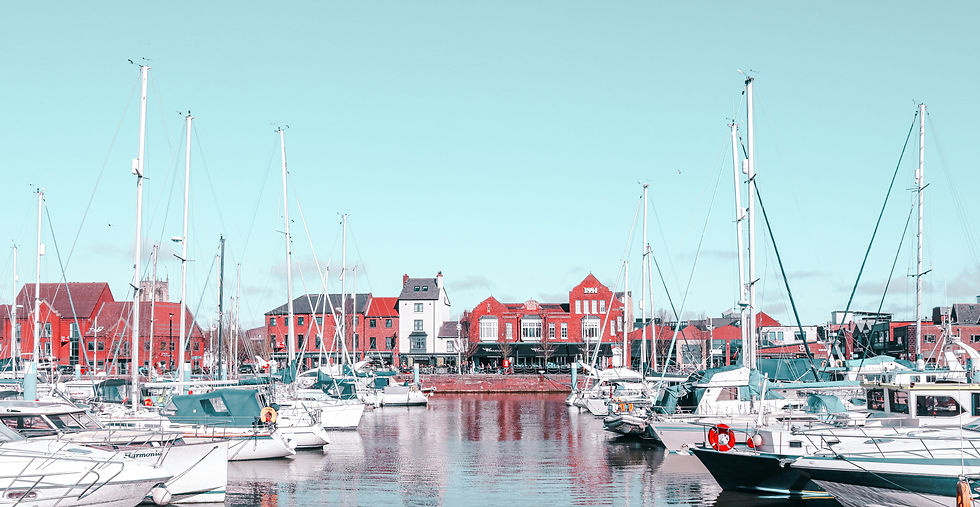How Artificial Intelligence is Shaping Architecture and Democracy in Denmark
- Frederick Rickmann

- 10月24日
- 讀畢需時 2 分鐘
已更新:11月3日
As Denmark approaches the next local elections, I’ve been reflecting on how artificial intelligence is quietly transforming both architecture and democracy. The connection might not seem obvious at first. However, when AI can generate vivid, realistic visions of what our cities could become, it opens entirely new ways for people to engage with local politics.
The Case of Horsens
Take Horsens in Denmark, for example. The city already has a recent harbour development, but the style and layout of that project are largely weak and anonymous — it could be anywhere. It lacks a connection to the existing city and its historic character. In my experiments with AI-generated architecture, I reimagined this waterfront. Where once there were sheds and industrial buildings, I explored how a new, multi-use district could emerge, fully integrated with the urban fabric of Horsens.

Horsens has a distinct architectural identity. Red brick dominates the streetscape, and most buildings feature pitched and sloping roofs. Any new development should respect this heritage while allowing for innovation. Using AI tools, I could quickly test multiple variations. It became a kind of digital sketchbook where history meets future potential.

Engaging Residents Through Visualization
What’s striking is how residents respond to these visualizations. Unlike verbal descriptions or abstract planning documents, images of a possible future city feel tangible and immediate. Suddenly, discussions about zoning, density, or public spaces become emotional, personal, and actionable. People start to imagine themselves living in that future. The conversation shifts from policy to shared possibility.

AI: A Tool for Democratic Engagement
In this way, AI isn’t replacing architects or planners — it’s democratizing imagination. It gives citizens a way to see potential futures, weigh trade-offs, and participate in shaping their city with clarity and creativity. Perhaps the real promise of AI in urban development is not only efficiency or aesthetics but the way it makes the future visible — and therefore debatable.
Maybe this is what local democracy could look like in the age of AI: a space where seeing is believing, and imagining together is the first step toward deciding together.
The Future of Urban Development
As we look ahead, the role of AI in urban planning will likely expand. Cities will increasingly rely on these technologies to visualize and simulate potential developments. This shift may lead to more inclusive planning processes, where every voice matters.
The Role of Community Feedback
Community feedback will become crucial. Cities can implement platforms that allow residents to provide input on AI-generated designs. This feedback loop can enhance the planning process, ensuring that developments reflect the needs and desires of the community.
Sustainability and Innovation
Moreover, AI can help in creating sustainable designs. By analyzing data, AI can suggest materials and layouts that minimize environmental impact. This innovation will be vital as cities strive to meet sustainability goals while accommodating growth.
To get the book, Dansk Ukrudt og Kunstig Intelligens, and read more: https://www.1234design.com/70-books/dansk-ukrudt



留言